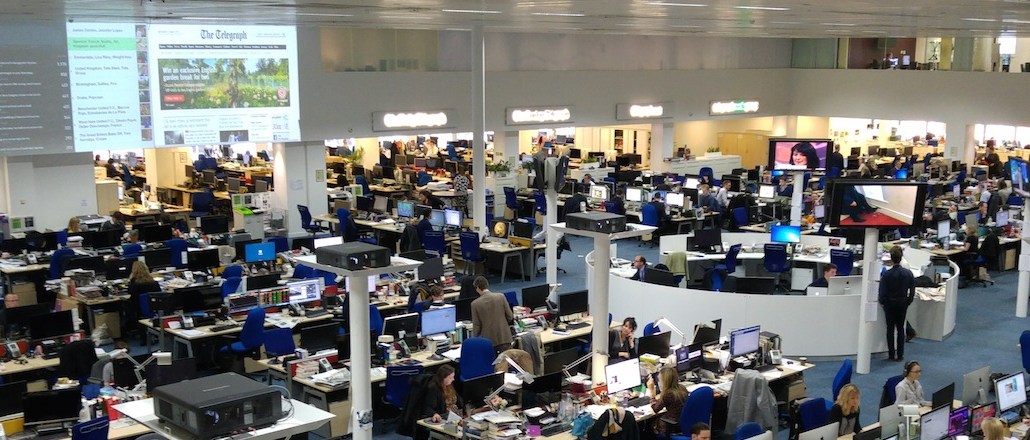
Apps remain an important channel for the Telegraph’s core audience of paying subscribers. Now, to better serve this small but engaged user base, the publisher has redesigned its main news app around speed and convenience.
Previously, the mobile app was available only to paying subscribers and was a similar experience to the mobile website. Now, in order to open it up to a wider audience, the app is free to download. The app has much clearer navigation from the outset: The reader chooses from one of eight verticals — top stories, news, sports, business, comment, entertainment, lifestyle and video. In each vertical, stories are ordered in a scrolling news feed, formatted as cards containing the story image and headline. Once in the article, readers can swipe left and right to get to the next or previous article.
“During our five different rounds of user testing, it was clear that readers really enjoyed the stream. It was reminiscent of scrolling through the news feed on Facebook and Twitter,” said Mark Channon, lead product manager on apps at the Telegraph Media Group.
This card format has sped up the load time of articles. Each article is preloaded; where previously it took two or more seconds to load articles, now it’s under one second, according to Channon.
The app has just 60,000 monthly active users and 19,000 daily active users. According to the Telegraph, users were spending between 14 and 18 minutes a day in the app, with each session generally lasting between eight and 11 minutes.
The publisher believes there’s a huge untapped audience for the app: The site attracts 55 million global unique mobile browsers, 20.3 million from the U.K., according to the publisher’s internal Adobe Analytics. “We think in terms of the Telegraph audience that may engage with the app, the potential audience is so big,” said Cat Wildman director of product at the Telegraph. “Whether the wider trend in app downloads is decreasing, our app engagement and app usage will grow.”

The redesign has taken five months and a team of 17 people. As more people use the app, the notifications it sends out — a new feature of the app — will become more targeted. This has its pros and cons: Readers can choose what’s relevant to them but will come across content less serendipitously.
The Telegraph charges £100, ($122), for a year’s digital subscription. Digital subscriptions is a “significant” revenue stream for The Telegraph, said Thomas Caldecott, senior research analyst at Enders.
Some analysts believe the publisher is making a mistake in not asking readers to sign up with more information when they download the app. “The best way of extracting value from an app user base is by getting information on them,” said Caldecott. “Asking people to register creates a friction that could deter users, but they don’t have the confidence in the app’s differentiation to ask users to fill out a form.”
Jamie Dunlop, head of publishing Total Media, suggested that the app could be a good way to for advertisers to reach a different type of Telegraph audience, “one that is slightly younger and probably city-based,” he said. “If you look at the Telegraph’s audience, they are slightly older than other competitors, It makes sense that it hasn’t been as quick to innovate.”
For now, though, the app just supports advertising from Spark, the Telegraph’s in-house content studio, in the form of branded content articles. According to Channon, there will only be a couple of sponsored articles a day.
“It’s a point of reach versus engagement,” said Dunlop. “You can have 19,000 people that you know like your friends or 200,000 people that you don’t know from Adam. I know which one I would target.”
More in Media

What publishers are wishing for this holiday season: End AI scraping and determine AI-powered audience value
Publishers want a fair, structured, regulated AI environment and they also want to define what the next decade of audience metrics looks like.

Media giant Essence launches a marketplace for Black women-led brands
Essence has launched WeLoveUs.shop, a new online marketplace dedicated to Black women-led brands.

In Graphic Detail: The state of AI referral traffic in 2025
The stats reveal a new audience pipeline forming outside of traditional search and social platforms.





